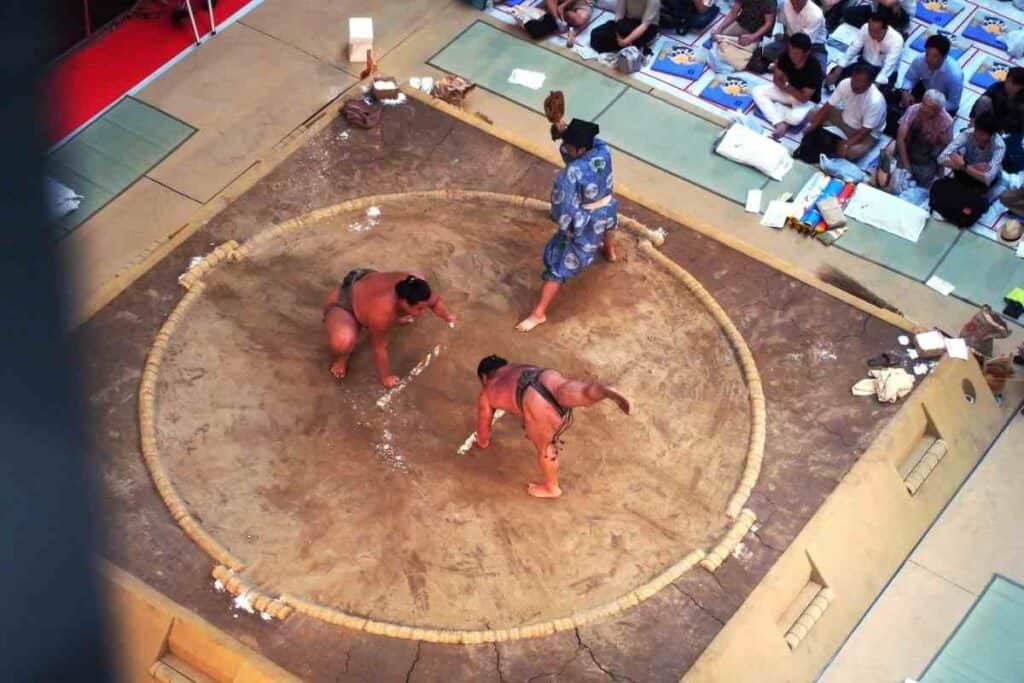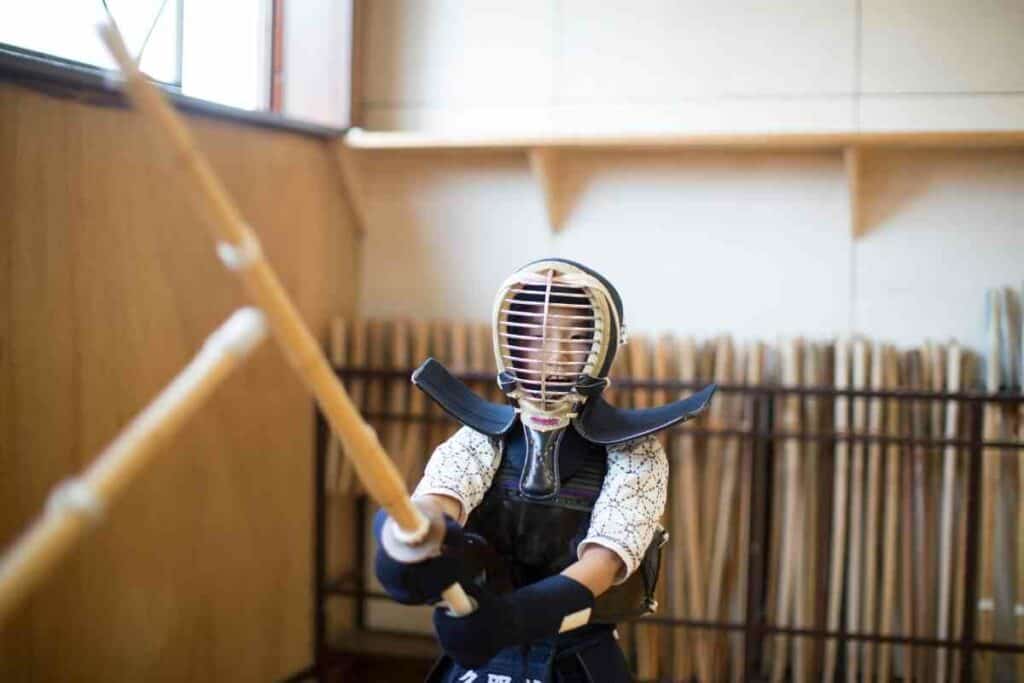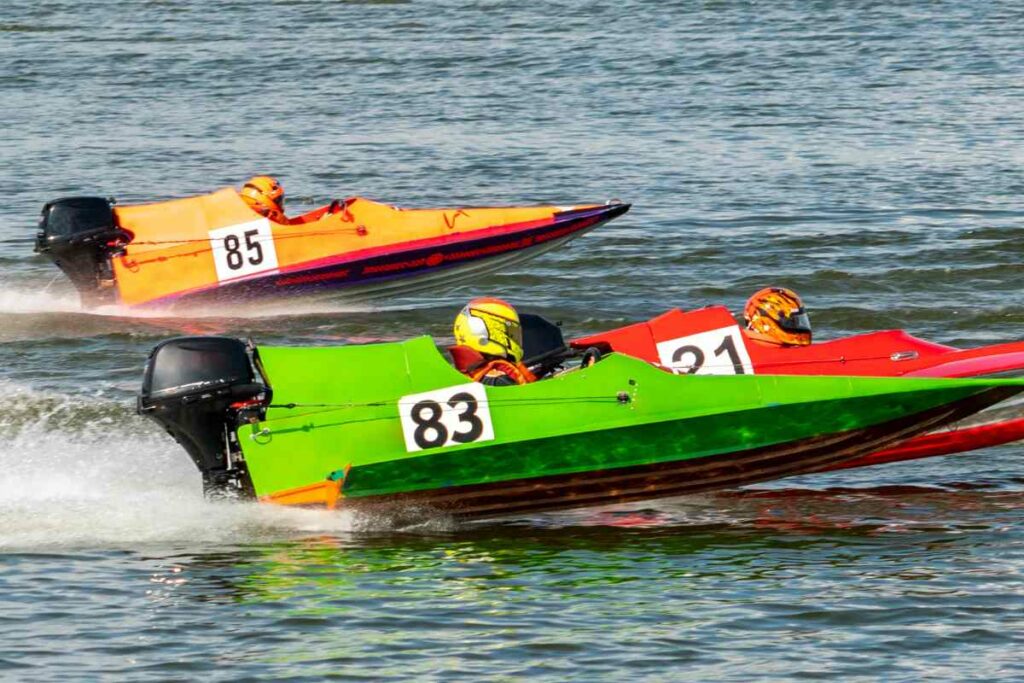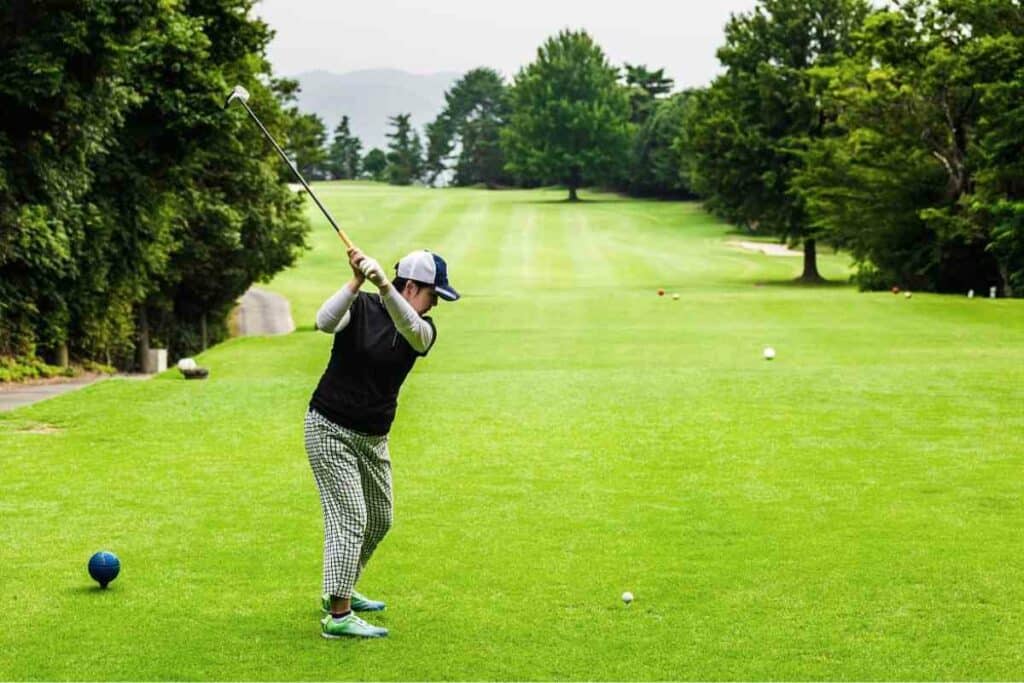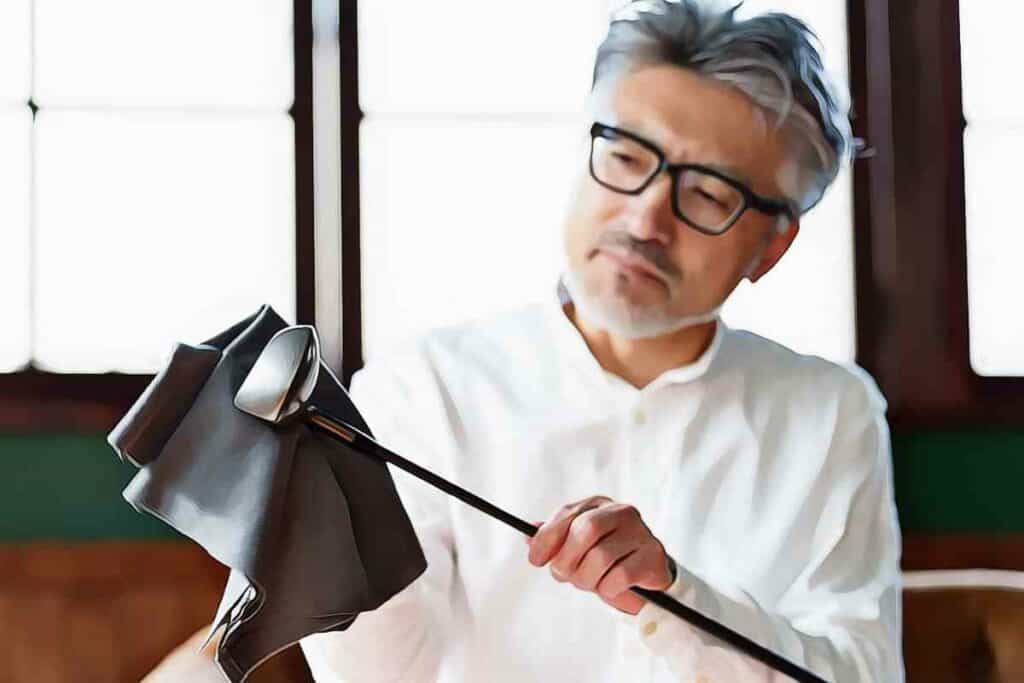If you’ve been studying Japanese martial arts, you may realize that some of the styles look similar.
Iaido and Kenjutsu are two styles that may seem hard to distinguish but are pretty different.
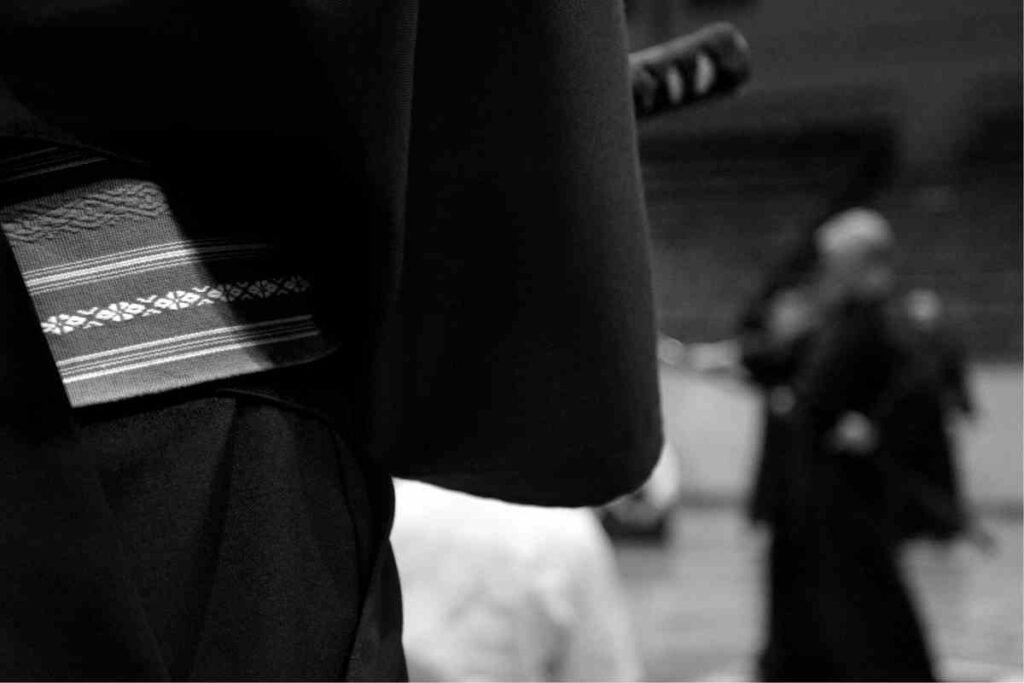
So what’s the difference between Iaido and Kenjutsu?
The main difference is in their focus. Iaido focuses on the art of drawing the sword from the scabbard. On the other hand, Kenjutsu focuses on the techniques used with the sword already drawn.
Let’s have a look at each style to distinguish them better.
Table of Contents
Differentiating Iaido and Kenjutsu: All about Iaido
Iaido is a style of martial arts that uses the Japanese long sword known as Katana.
It encompasses several sword arts whose concentration is on drawing the sword as smoothly and efficiently as possible.
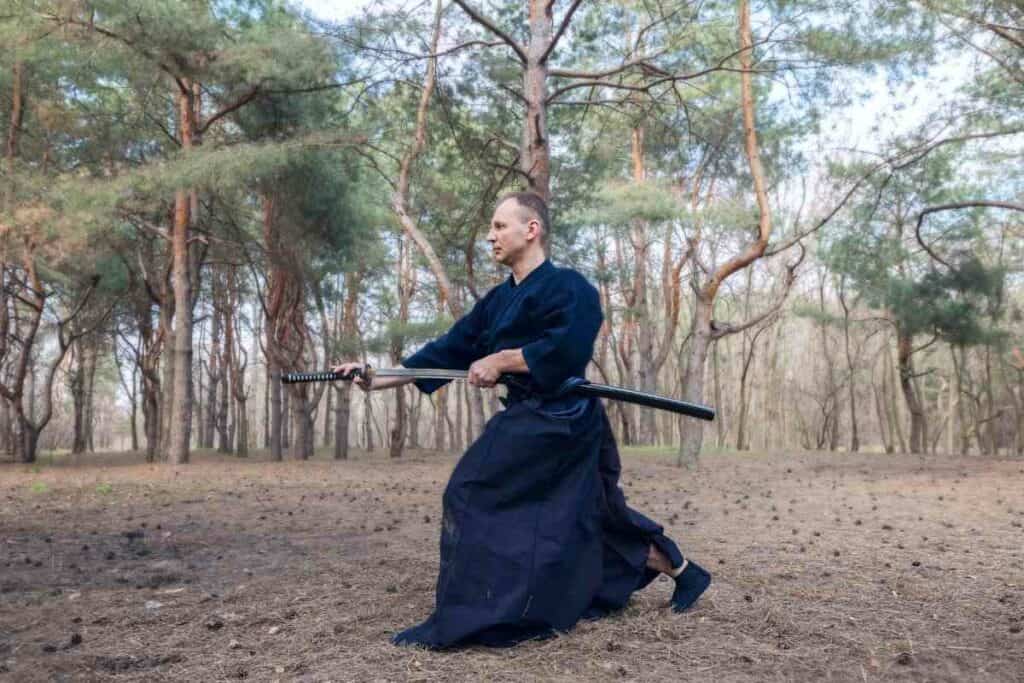
The sword drawing technique is not the only element of this art:
- It also includes following a set of choreographed movements depending on the scenario.
- The other activities involve striking the opponent, getting rid of blood from the blade, and returning the sword to the sheath.
In Iaido, your mindset is a critical component. One has to maintain composure and mental acuity so that their attack can be as seamless as possible.
Drawing your sword earlier than necessary is considered an act of aggression and can escalate the situation further.
One is expected to dissuade the opponent using an imposing presence and only use the sword as a last resort.
Once the practitioner releases their sword from the scabbard, they should make deliberate movements in harmony with their opponent’s motion.
The effectiveness of these movements is critical; one is not supposed to make aimless moves.
The emphasis on calmness and decisive acts in Iaido improves the mental focus of its students.
It also helps them remain composed in challenging situations and maintain peaceful relationships.
The Purpose of Iaido
One unique aspect of Iaido is that it’s a solo practice.
The swordsman does not usually have a partner. It also involves many repetitive movements in kneeling and standing positions.
In Addition – No sounds accompany these movements. The only sound you could hear would be the sword in a cutting motion.
As someone new to this practice, you may observe Iaido in confusion, wondering what the point is.
The main focus of this style is making the practitioner better at using the sword instead of fighting.
That said, Iaido practitioners can effectively fight an adversary if they find themselves in such a situation.
However, there is rarely any practical use of swords in the modern world.
So why go through such rigorous training? To condition your body and for self-development. Looking at Iaido in practice, it may seem easy.
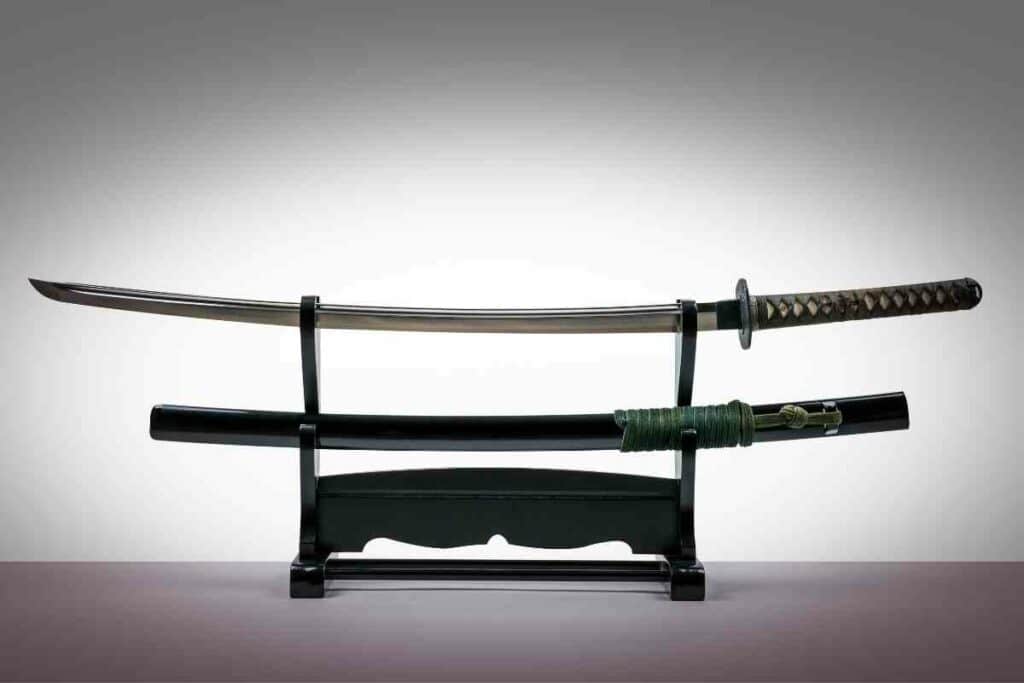
But, maintaining synchrony in sword and body movements requires a high level of conditioning.
If either the body or the sword faces the wrong direction, the practitioner becomes vulnerable even by a small margin.
This art follows strict rules that are physically taxing. Training in Iaido also gives one some essential self-development skills.
The skills include:
- attention to detail
- mental focus
- analytical thinking
- and a calm spirit regardless of circumstances
Training in Iaido
To practice Iaido, a practitioner should dress in traditional pleated flared trousers known as Hakama.
Typically, beginner and intermediate practitioners use either a wooden sword (bokken) or a metal sword without a cutting edge (iaito).
The more experienced practitioners can use a sharp-edged sword called Shinken.
In Addition: The practitioners are required to follow proper etiquette. There is also an emphasis on correct posture, footwork, breathing, proper sword grip, and timing.
All about Kenjutsu
Kenjutsu covers the methods and techniques of all Japanese swordsmanship.
It dates back to the 15th century during the Samurai classes, which were like military training.
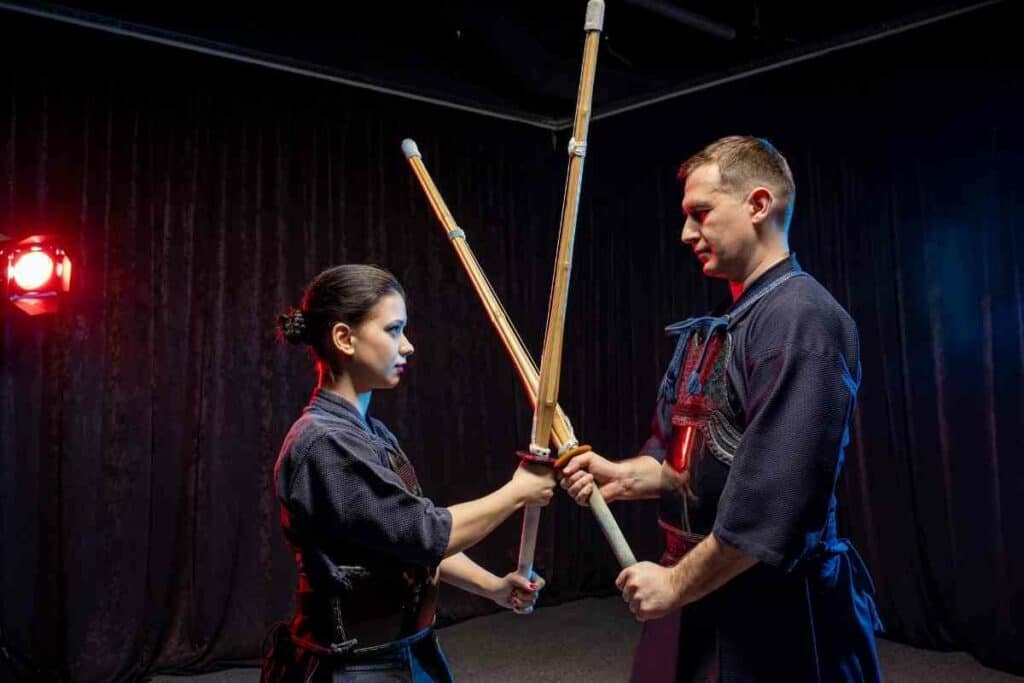
The main focus of Kenjutsu is the battle with swords.
They used either:
- real swords (Katana)
- or wooden swords (bokken or bokuto), which had lower chances of injury
The practice later evolved and included the use of bamboo sticks and body armor, which permitted full contact sparring.
Kenjutsu became less popular in the 19th century when Samurai classes ceased.
Martial arts in Japan also went through a significant shift, with more modern techniques appearing. However, the modern ways stem from the old styles.
That Said: Those interested in traditional Japanese martial arts can still learn Kenjutsu.
Kenjutsu Training
Different schools apply different techniques and styles while teaching Kenjutsu.
The first difference comes in with the choice of weapon.
The weapons commonly used include:
- wooden swords (bokuto)
- bamboo swords covered in leather (fukuro shinai), or tree branches.
The fukuro shinai is best for beginners who are yet to master sword control.
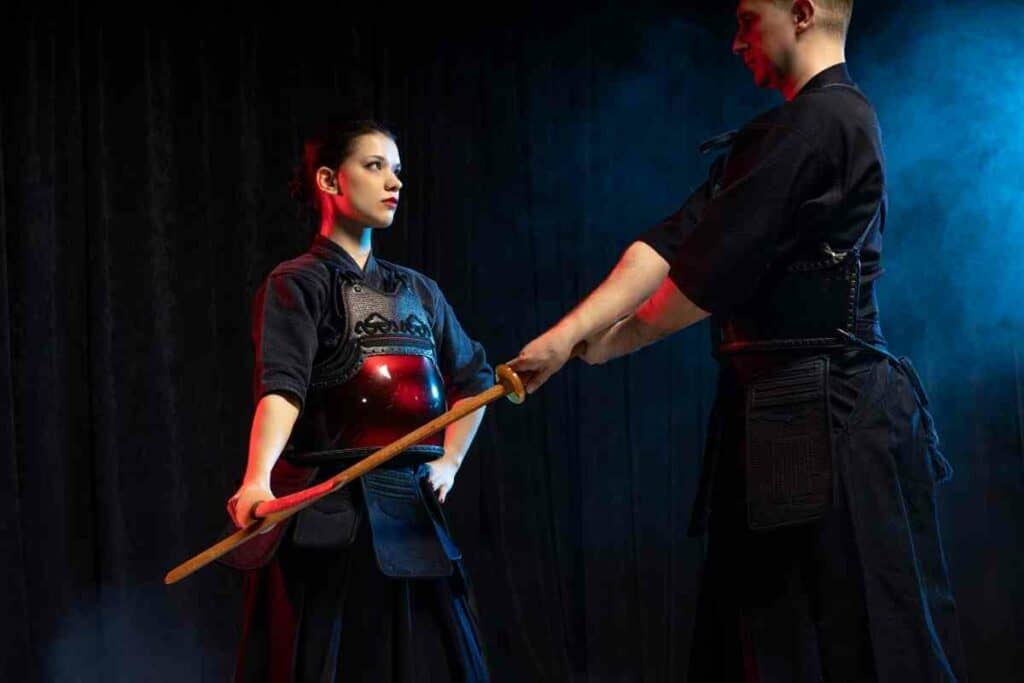
It has reduced hitting impact on the sparring partner, hence having lower chances of injury.
In other schools, they use:
- blunt-edged swords (habikitō)
- or sharp-edged ones (shinken)
That said, the shinken is only open to high-level practitioners due to its high risk of injury.
Even more, some schools prefer to have additional protective clothing.
These include leather gloves protecting the hand and forearms, headgear, and some form of waist protection. The gloves vary in thickness.
Kenjutsu training is also done either alone or with an opposing partner. When done with a partner, it is typically non-contact.
This means that the practitioner can make attacking or counter-attacking moves without full extension to contact the opponent.
They can also practice other techniques but maintain non-contact. Even so, some schools allow complete contact.
Kenjutsu practiced alone is also different from Iaido and should not be confused for it.
Kenjutsu training is mainly done in Kata form, a set series of moves. Some of the skills learned include cutting, thrusting, feigning, jabbing, parrying, and good footwork.
To practice Kenjutsu, you need to be dressed in the right gear:
- For non-contact training, you should wear a traditional jacket (Keigoki), flared pants (Hakama), and an Obi belt.
- For full contact training, you need a helmet, breastplate, gloves, training armor (Bogu), waist armor (Tare), and a cotton head towel.
The helmet should have a grille faceguard and protection for the neck and shoulders.
Conclusion
As you have seen, Iaido and Kenjutsu are pretty different.
Iaido is a more relaxed style whose emphasis is on calmness combined with quick and efficient execution.
Kenjutsu, on the other hand, is more focused on the fight and the techniques used to take out the opponent.
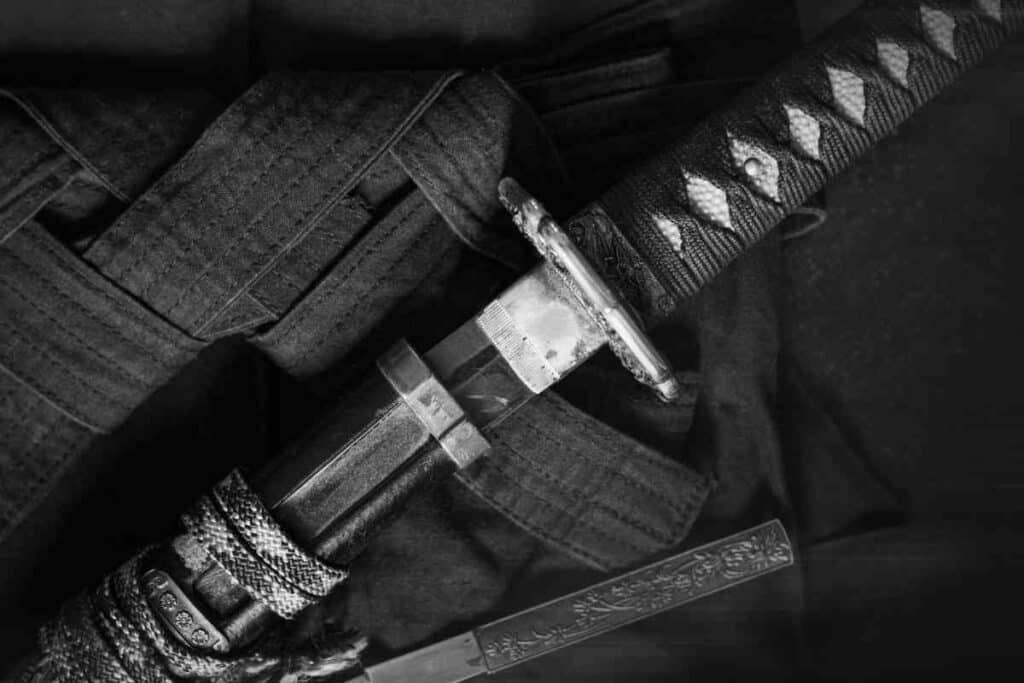
Another difference comes in with the use of partners. Iaido is exclusively done alone, while Kenjutsu makes use of partners.
Iaido is also interested in blade removal, while Kenjutsu does not focus on that aspect. It is more interested in what happens after the blade has been removed.
The two styles also share some similarities:
- The first similarity is evident in the choice of weapons. Both use wooden swords in addition to blunt and sharp-edged swords. They also use the weapons in order of experience.
- There is also a similarity in the attire, except for the full-contact gear in Kenjutsu.
You can now choose the style you would like to practice with that information. It is essential to note that Iaido is more popular than Kenjutsu in modern times.
As such, you may find more schools teaching Iaido than Kenjutsu. Whatever style you learn, the skills you gain are well worth it.

